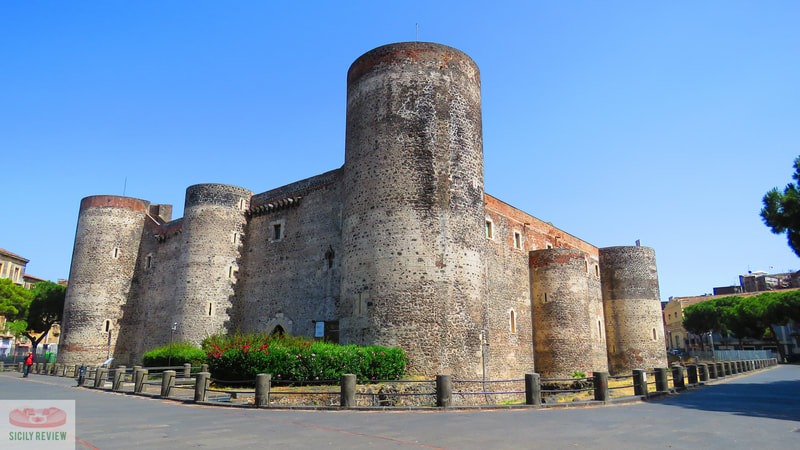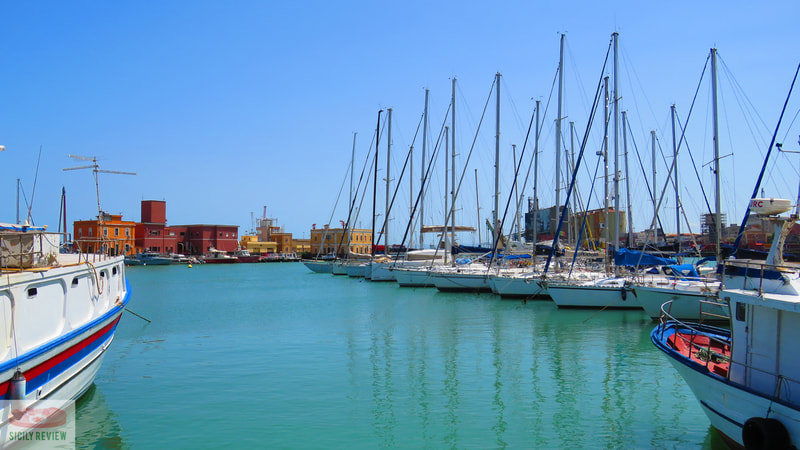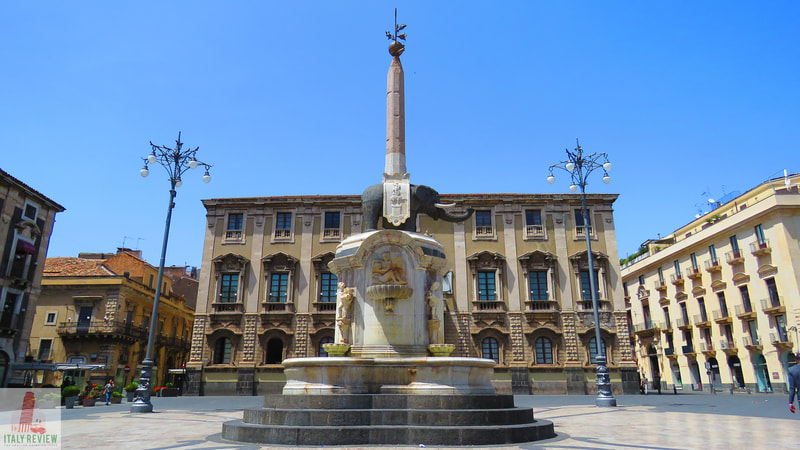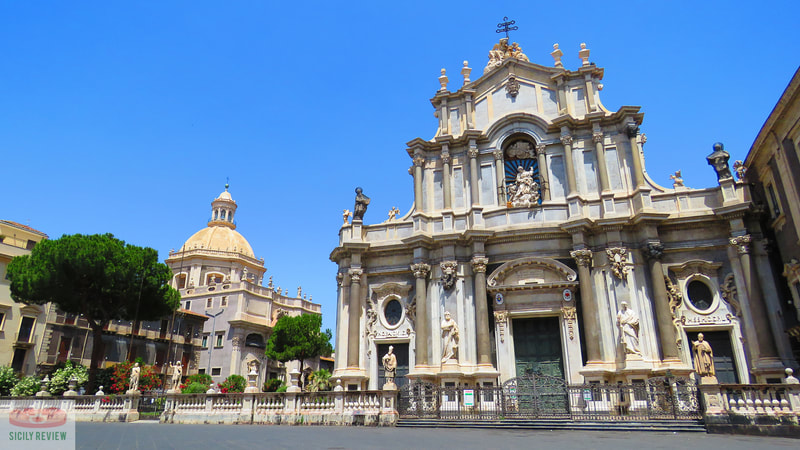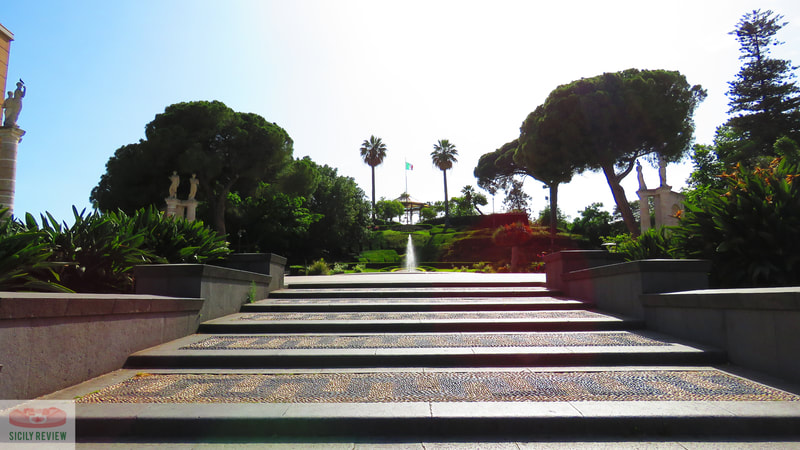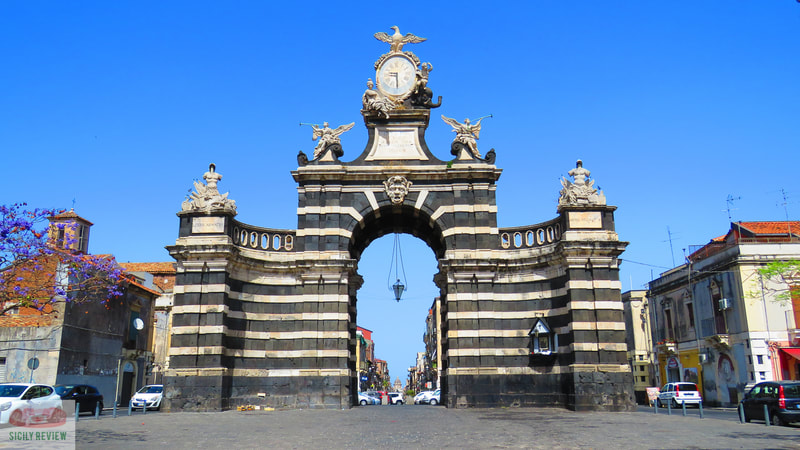Catania
|
By Dion Protani
|
Latest update: 30 December 2023
|
|
With a population of 300,356 in 2022, the city of Catania is the second most populous city in Sicily. Situated on the Ionian coast, it covers a total area of 183 square kilometres and lies 216 kilometres south east of Palermo, the regional capital of Sicily.
An important port town, it is also one of the Late Baroque Towns of the Val di Noto (South-Eastern Sicily) inscribed since 2002 as a UNESCO World Heritage Site. Catania's most famous sights include the Fontana dell'Elefante, the eleventh century Catania Cathedral and the Castello Ursino fortress. |
Related links
Sightseeing Catania: Piazza Duomo and around
Key sights include the Fontana dell'Elefante (Elephant Fountain) which is the city's symbol. The elephant is known locally as Liotru, and the statue itself, replete with an obelisk towering from the elephant's back, was built by the Romans. There are a variety of theories as to the significance of the elephant, ranging from the supposed presence of mini elephants around nearby Mount Etna, to the story of a local wizard who was able to transform into an elephant whenever the need arose; not that often I would have thought.
The elephant fountain is located on Piazza Duomo which is the very centre of the city. The beautiful piazza is one of the main reasons Catania has its place in the UNESCO list; along with the other towns on the list (Militello in Val di Catania, Palazzolo Acreide, Caltagirone, Modica, Scicli, Ragusa and Noto itself), the accolade is due to the quality of Baroque architecture used in the rebuilding that was necessary in the wake of the 1693 earthquake that destroyed much of the area.
Key sights include the Fontana dell'Elefante (Elephant Fountain) which is the city's symbol. The elephant is known locally as Liotru, and the statue itself, replete with an obelisk towering from the elephant's back, was built by the Romans. There are a variety of theories as to the significance of the elephant, ranging from the supposed presence of mini elephants around nearby Mount Etna, to the story of a local wizard who was able to transform into an elephant whenever the need arose; not that often I would have thought.
The elephant fountain is located on Piazza Duomo which is the very centre of the city. The beautiful piazza is one of the main reasons Catania has its place in the UNESCO list; along with the other towns on the list (Militello in Val di Catania, Palazzolo Acreide, Caltagirone, Modica, Scicli, Ragusa and Noto itself), the accolade is due to the quality of Baroque architecture used in the rebuilding that was necessary in the wake of the 1693 earthquake that destroyed much of the area.
Catania Cathedral
Apart from the Fontana dell'Elefante, the main structure on Piazza Duomo is the beautiful Catania Cathedral, originally built in the 11th century. To the right of the Cathedral lies an elegant walkway which ends at the elegant Porta Uzeda city gate. Turn right at the gate (or south west from the centre of Piazza Duomo) and you arrive at the famous Pescheria fish market. This is one of the liveliest areas of the city and apart from the wares on offer in the market, there are some great, unassuming places to eat.
Apart from the Fontana dell'Elefante, the main structure on Piazza Duomo is the beautiful Catania Cathedral, originally built in the 11th century. To the right of the Cathedral lies an elegant walkway which ends at the elegant Porta Uzeda city gate. Turn right at the gate (or south west from the centre of Piazza Duomo) and you arrive at the famous Pescheria fish market. This is one of the liveliest areas of the city and apart from the wares on offer in the market, there are some great, unassuming places to eat.
Churches and Municipal Buildings
Although the Cathedral is unquestionably the most important church in the city, there are several others that are worthy of a visit: the Chiesa di San Nicolò l'Arena and the Chiesa della Badia di Sant'Agata chief among them. The same can be said of the city's squares with Piazza Duomo rightfully grabbing the majority of attention but others such as Piazza Stesicoro and Piazza Università contributing to the city's overall sophisticated style. Two of Catania's most important public buildings are situated on Piazza Università: the Palazzo San Giuliano and the main Catania University building facing each other.
Although the Cathedral is unquestionably the most important church in the city, there are several others that are worthy of a visit: the Chiesa di San Nicolò l'Arena and the Chiesa della Badia di Sant'Agata chief among them. The same can be said of the city's squares with Piazza Duomo rightfully grabbing the majority of attention but others such as Piazza Stesicoro and Piazza Università contributing to the city's overall sophisticated style. Two of Catania's most important public buildings are situated on Piazza Università: the Palazzo San Giuliano and the main Catania University building facing each other.
Homages to Vincenzo Bellini
Another beautiful square, Piazza Bellini, is home to the Teatro Massimo Bellini. The word Bellini appears in various places around Catania with the frequency of the name an homage to one of the city's favourite sons: composer Vincenzo Bellini (1801-1835). His name can also be found at one of the prettiest city parks in Italy, the lovely Villa Bellini.
Another beautiful square, Piazza Bellini, is home to the Teatro Massimo Bellini. The word Bellini appears in various places around Catania with the frequency of the name an homage to one of the city's favourite sons: composer Vincenzo Bellini (1801-1835). His name can also be found at one of the prettiest city parks in Italy, the lovely Villa Bellini.
Castello Ursino and Optional Sights
A five minute walk south-west of Piazza Duomo brings you to another of the city's main sights: the Swabian castle called Castello Ursino which dates back to the 13th century. You can spend a good few hours exploring the castle and if you have time (and energy), a 15 minute walk, mostly along the long thoroughfare of Via Garibaldi brings you to the Porta Ferdinandea, another city gate which is also known as the Porta Garibaldi. It's by no means an obligatory stop however, and does take you away from the centre somewhat where there is still more to concentrate on.
Much closer to Piazza Duomo is the Teatro Romano, an open-air Roman Theatre that you need to pay to enter. I mention this as it's not to be confused with the Anfiteatro Romano, the Roman Amphitheatre that's free for everyone to see and is located north of Piazza Duomo on the aforementioned Piazza Stesicoro and close to the Villa Bellini park.
A five minute walk south-west of Piazza Duomo brings you to another of the city's main sights: the Swabian castle called Castello Ursino which dates back to the 13th century. You can spend a good few hours exploring the castle and if you have time (and energy), a 15 minute walk, mostly along the long thoroughfare of Via Garibaldi brings you to the Porta Ferdinandea, another city gate which is also known as the Porta Garibaldi. It's by no means an obligatory stop however, and does take you away from the centre somewhat where there is still more to concentrate on.
Much closer to Piazza Duomo is the Teatro Romano, an open-air Roman Theatre that you need to pay to enter. I mention this as it's not to be confused with the Anfiteatro Romano, the Roman Amphitheatre that's free for everyone to see and is located north of Piazza Duomo on the aforementioned Piazza Stesicoro and close to the Villa Bellini park.
Comune di Catania
|
Region: Sicily
Province: Metropolitan City of Catania Population: 301,104 (source: ISTAT 1 January 2023) Size: 183 km² Top sights: Catania Cathedral, Fontana dell'Elefante, Pescheria Famous native: Vincenzo Bellini (1801 - 1835), composer Close by: Mount Etna, Acireale, Taormina, Giardini Naxos Recommended accommodation: Airone City Hotel |
UNESCO World Heritage Site
Late Baroque Towns of the Val di Noto (South-Eastern Sicily)
Year: 2002
Late Baroque Towns of the Val di Noto (South-Eastern Sicily)
Year: 2002
Catania Travel
From Catania's sea port you can take ferries to Salerno, the city that lies at the southern end of the Amalfi Coast, or a little further north to Naples. The Catania to Salerno crossing takes place overnight with a journey time of 13 hours. Despite the long navigation, it can be a useful option if you need a rest from driving or prefer not to fly.
It's also possible to sail from Catania to Valletta in Malta, a journey which takes around seven hours. It may be a temptation to visit the port area by the way as they can often be some of the nicest parts of a city but that's not the case with Catania; there's very little to see around the port and it's really just there for practical purposes.
Catania has its own airport which is located five kilometres outside the city and it's also a good base from which to visit famous nearby sights such as Mount Etna (52 minutes by car) or Taormina (56 minutes).
It's also possible to sail from Catania to Valletta in Malta, a journey which takes around seven hours. It may be a temptation to visit the port area by the way as they can often be some of the nicest parts of a city but that's not the case with Catania; there's very little to see around the port and it's really just there for practical purposes.
Catania has its own airport which is located five kilometres outside the city and it's also a good base from which to visit famous nearby sights such as Mount Etna (52 minutes by car) or Taormina (56 minutes).
|
Public transport: Central train station, local buses, ferries
By car: Mount Etna - 52 mins, Taormina - 56 mins |
Fly to: Catania Airport (5 km), 11 mins by taxi, 20 mins by bus
By train: Palermo - 3 hours, Messina - 1 hr 25, Syracuse - 1 hr 17 |

